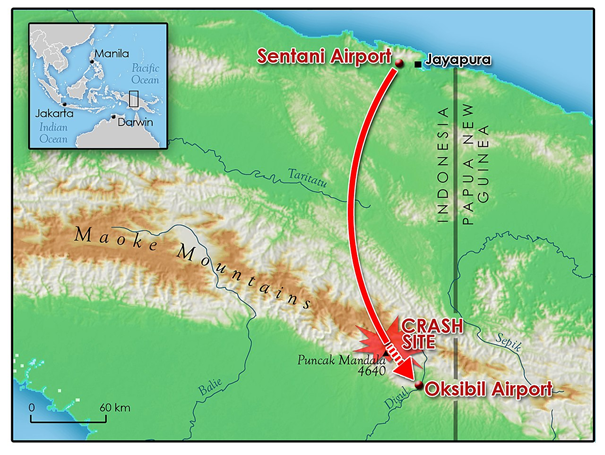The Weekly Reflektion Week 06/2021
Taking shortcuts increases the risk to your operation, especially if alarms are overridden to be able to make the shortcuts.
Do you accept shortcuts and allow people to override safety systems to be able to take these shortcuts?

Trigana Air Flight 267, an ATR 42 turboprop, was flying from Sentani to Oksibil in eastern Indonesia on the 16th August 2015. The aircraft crashed in the Bintang highlands region on the approach to Oksibil airport and all 49 passengers and 5 crew members were killed. Contact with the aircraft was lost at 14:55 and no distress call was received from the crew before the crash.
The crash location was difficult to reach in mountainous terrain and it was not possible to recover the aircraft wreckage for inspection. The Flight Data Recorder (FDR) the Cockpit Voice Recorder (CVR) were recovered but only the CVR functioned. The recording revealed that prior to the crash there had been no alarms, no reaction from the crew and no discussions between the captain and first officer. The aircraft just crashed into the mountains without any warning.
The approach into Oksibil is difficult as it is in a valley surrounded by high mountains. The weather conditions are notoriously difficult to predict due to the mists and fogs that form quickly. The normal approach is to fly over the airport to get a good sighting of the runway and then turn 180 degrees to make the landing.
The flight from Sentani to Oksibil is a short tour and earlier in the day the same aircraft with the same crew had made the trip and landed safely at Oksibil. The crew had not followed the normal procedure and had made a direct approach to the runway on landing, saving them time. At this time there were clear skies and good visibility. When the aircraft approached Oksibil later in the day there was thick fog, and it was not possible to see the runway. The investigators believe that the crew tried to make the same approach as earlier in the day however this time they had no visual contact with the runway.
This did not explain why there was no proximity alarm as the aircraft flew into the mountains. An Enhanced Ground Proximity Warning Systems (EGPWS) was fitted to the aircraft and should have sounded as the aircraft approached terrain. The investigators found that ‘spurious’ alarms from the EGPWS and been reported, and the management had been informed that some pilots pulled out the circuit breaker to disable the system due to these alarms. The captain of Trigana Air Flight 267 was one of the pilots that was scheduled for a disciplinary meeting on this subject. The investigators found it likely that the captain had pulled the circuit breaker on the EGPWS on the previous flight and had forgotten to reset it for the later flight. Investigations also revealed that the company instructions for the approach to Oksibil were incorrect. The minimum safe altitude on the approach chart was stated as 8000 ft. The aircraft crashed into the mountain at 8300 ft.
Taking shortcuts, overriding safety functions and incorrect information can all lead to serious consequences. Combine these and disaster is likely. Do you have control on what is happening in your operation?
